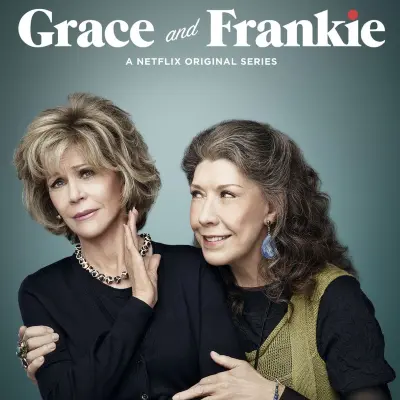An appreciation of Grace and Frankie, TV's greatest female friendship
-

"When Grace and Frankie premiered in 2015, it lulled viewers into something of a false sense of security," says Rachael Sigee of the Netflix comedy that concluded its 94-episode run on Friday. "Appearing to be a cozy sitcom about the older generation, it offered a classic farcical setup: a hasty odd-couple arrangement, with each woman refusing to move out of a shared beach house. The stage was set for gags about older people misbehaving. Those gags are certainly in there but, more important, so is a revolutionary narrative of women finding meaningful relationships beyond their familial structures. " Sigee adds: "Grace and Frankie took women who already knew themselves (or thought they did) and proved that the platonic enmeshing of two lives can happen at any age. These are women acquainted for 40 years, for the entirety of which they have failed to see eye to eye. But it is only at the age when they are becoming invisible to the wider world that Grace and Frankie finally see one another in vibrant color. And so there is a sense of urgency: time is not on their side. This is not a friendship built on hopes for the future but on making the most of the present (and sense of the past). It is true that this is a show about extremely wealthy white women but, in many ways, it is that level of privilege that allowed Grace and Frankie to home in on age as its primary antagonist."
ALSO:
- Grace and Frankie co-creator Marta Kauffman says crafting a series finale is more difficult that making a pilot: "Endings are harder than pilots. They’re so much harder. You want people to feel satisfied by things, you want them to feel unexpected. They’re really hard," says Kauffman, adding that the final season was especially difficult because of the pandemic. "You can’t have that many people in a scene, and you can’t have that many extras, so we were constantly adjusting. We didn’t have the luxury of months," says Kauffman. "It was very hard to write during COVID. It was very hard to imagine into the future when we couldn’t imagine what the future was going to look like. And then, once we got back, we did not realize how much we were going to have to do and adjust for the protocols." As for Dolly Parton's series finale cameo, Kauffman says: "Working with Dolly was incredible. She is such a pro. She wears four-inch heels all the time, going up and down these steps to the stage. She knows what she does well, and then she does it really well. My favorite moment came when we were going to take a picture at the very end and she looked at me. She said, 'Come here, you old hippie.' That made my entire career."
- 11 reasons why Grace and Frankie will be missed
TOPICS: Grace and Frankie, Netflix, Jane Fonda, Lily Tomlin, Marta Kauffman, Series Finales
More Grace and Frankie on Primetimer:- Is Kevin O’Leary an actor? Mr Wonderful’s acting credits explained amid Timothee Chalamet movie role
- By the Numbers: Which Netflix Shows Have Run for 5 Seasons or Longer?
- Why is Netflix obsessed with creating shows like New Girl
- Why wasn't there more hoopla surrounding Grace and Frankie's series finale?
